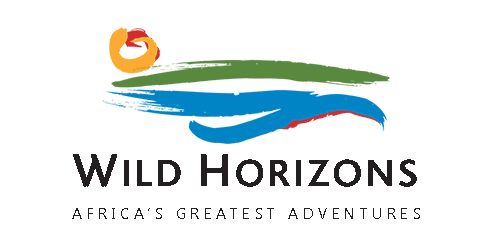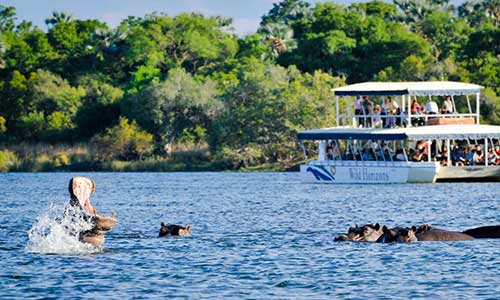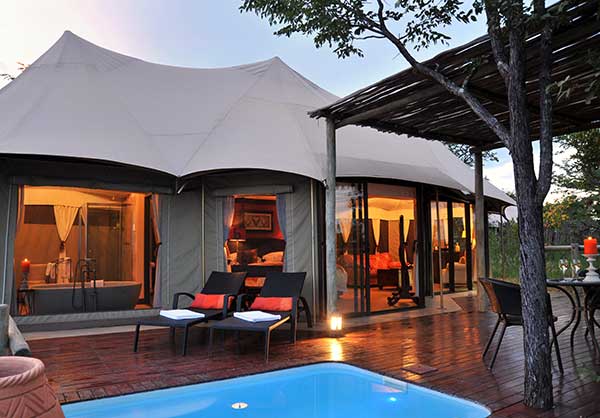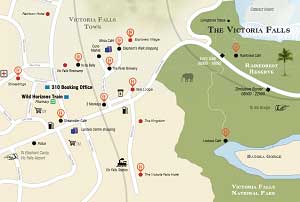Oct 12, 2015 | meetourpeople, Wild Horizons Activites, Wild Horizons Lookout
Moeketsi Ndlovu is a 30-year-old chef who grew up in Victoria Falls but was originally from Esigodini, Zimbabwe. His family noticed his talent in the kitchen early on.
My Grandmother used to enjoy my cooking so she always encouraged me to become a chef though she had a belief it was not a paying job.
His grandmother was right about Moeketsi’s talent but wrong about there not being paid employment in his field. He was employed by Victoria Falls Safari Lodge as an Apprentice Chef in 2005. Moeketsi is now a head chef with 10 years of experience under his belt and says one of his accomplishments was winning the restaurant of the year for the Palm Restaurant, Ilala Lodge, Victoria Falls for three years running during his time there.
On the 23’rd of December, Moeketsi opened the Wild Horizons Lookout Café as the head chef. The café is cantilevered on the edge of the Batoka Gorge and offers diners truly stunning views of the canyon and the Victoria Falls Bridge. However, the tasty and affordable menu brimming with simple, fresh flavours is what draws people. Moeketsi changes the menu with the season and loves to experiment with new dishes while still keeping the same value and quality the Lookout Café has become known for.
Moeketsi says;
Planning a new menu has always given my career its challenges; playing around with combination of flavours, the health aspects of the menu and finally the costing which turns me into an accountant as well!
It is a technique that works and The Lookout Café has been an incredible success, garnering great reviews from international customers, and quickly becoming a favourite for local clientele. In the short space of a year café has more than doubled its seating capacity as a response to the overwhelming demand from the public. Much of this has been due to the innovation and hard work of the head chef and team in the kitchen who work hard every day to ensure the best food is served.
To young people wanting to become a chef Moeketsi says
‘…chefs have good job opportunities so if you have a passion for cooking it’s a fantastic job, but I repeat, only if you have passion!’
Sep 3, 2015 | Family Friendly Activity, Things to do in Victoria Falls, Wild Horizons Activites
#1 See the Mighty Victoria Falls
The sheer power of the Zambezi water cascading over the cliff into the gorge below and sending sprays of water over the rainforest is spectacularly beautiful and restores an inherent love of nature. It is the awe that you feel seeing the power of Nature at its best. The views, the Rainbow ever-present, the humidity, the feel, it’s really breathtaking and a ‘must’ on any bucket list.
Tips:
- The Zimbabwe side of the Falls offers the most impressive views of the Main Falls.
- No matter the time of the year you may get wet! It is hot in Zimbabwe so many find it refreshing but ensure your camera gear/ cellphone/passport is protected with a ziplock for wet areas and try not to wear anything that may become sheer.
- Bring water, the cost of water is more expensive on site than if you buy it else where before arriving.
- Wear good walking shoes, especially important for the wet areas that could be slippery.
- The walk back through the rainforest is beautiful but it is long! It’s a very relaxing walk with benches to stop at along the way and the path is nice and wide and smooth!
- Rainbows are cool. But what trumps rainbows? Moon-bows. If you visit Victoria Falls during a full moon, the light of the moon through the waterfall’s spray produces a lunar rainbow, or moon-bow.
- If you can afford it get a guide, they tell you so much about the History of the Falls and the surrounding Area than what you can figure out for yourself from just visiting.
Coming soon #2 on our list of the seven wonders of Victoria Falls: Raft the mighty Zambezi!
Aug 25, 2015 | Family Friendly Activity, Home Hosted Meals, meetourpeople, Sustainiable Tourism, Things to do in Victoria Falls, Victoria Falls, Wild Horizons Activites, Zimbabwean Culture
Victoria Falls Home Hosted Dinner
As someone with a passion for culture, travel and food I love the idea of a home hosted dinner. The concept is a simple one; your host cooks and shares a traditional meal with you, at his or her place.
In Victoria Falls this means that you are welcomed into a typical Zimbabwean house in ‘Chinotimba’. Chinotimba is a high-density suburb of Victoria Falls and away from the general main town and fancy hotels. It is where most of the population of Victoria Falls lives and is also known as Chinotimba Township.
I had the chance to attend a home hosted dinner recently (You can also go for lunch). The cost of the meal includes your return transfers and I was picked up first. We collected the other guests from the beautiful and manicured Victoria Falls Hotel. The other attendees were two American couples. As we moved in the bus away from elegant lawns and colonial architecture into Chinotimba the sounds and smells coming through the windows which we had opened became more intense. It was as if we were watching Mother Africa peel off layers of adornments to reveal her heart.
In Chinotimba the streets are uneven and crowded; crowded with women dressed in colourful ‘chitenge’ fabric wrappers and firewood precariously balanced upon their heads; crowded with children playing and laughing; crowded with old men chatting in the street. Whereas at night the streets in the centre of town were quiet Chinotimba was full of life. There was a sense of palpable excitement in the bus.
We pulled up at a small European style house in close proximity to its neighbours. Our host Tshipo made her way down the front steps. She was dressed in a traditional ‘wrapper’ made from local fabric around her waist and had another as a head-dress. She welcomed us warmly, clasping our hands in both of hers as she greeted us. Her yard was swept clean and rather than an ornamental garden it housed rows of vegetables (Tshipo proudly told us that this is typical here where most households grow and use vegetables). Children of varying ages shyly peeked at us and darted forward to touch a hand or ask questions. After we had all been introduced our host showed us into her living room.
From early on the interaction was very human; everyone wanted to know about each other ‘Where are you from?’, ‘Are these all your kids?’ Once we got to know each other we were seated. Tshipo had prepared the meal prior to our arrival and there were multiple covered dishes. Tshipo opened them one by one and explained the different dishes as she served them.
There was sadza (polenta or maize meal) the staple of all of Southern Africa, kale with a peanut (similar to satay) sauce, kale sautéed with onion and tomato, Kapenta (small, dried and salted fish), beef stew, chicken stew and a side of Mopane Worms (dried caterpillars) for those who were adventurous. The table burst into laughter when a guest enquired about the tiny kapenta fish ‘How do you find a hook small enough to catch them?!’ and Tshipo responded ‘We use a net’.
As we ate we talked loudly and excitedly, the guests and host shared images of their grandchildren… We learned that everyone had far more things in common than different. And after dinner, the children who had eaten in the kitchen with their grandmother crowded around to meet us. An American lady started singing songs her children had liked to one of the little girls and the next thing we knew we had a sing-a-long. The little children were really excited to sing for us so we got to hear a few Ndebele songs before Tshipo sternly reminded them of bedtime on a school night and ushered them off.
After a cup of tea or coffee with our host it was time to return to our hotels and we said a warm farewell to Tshipo. It was a delightful evening and an experience I would recommend to anyone visiting Zimbabwe. The experience is so genuine. You have an interaction that is deceptively simple, yet somehow meaningful; the sharing of a meal. If you’re lucky you’ll make a friend as we all did exchanging email addresses and swapping photos.
Details
-
Home Hosted Dinners and Lunches are offered by Wild Horizons
-
A great experience for children or teens who will enjoy meeting other children and learn about other cultures.
-
Expect an authentic home cooked meal- there will be options you are familiar with that are commonly eaten in Zimbabwe such as beef stew as well as some local dishes that may be new to you. You do not have to try these if you are wary but it is great fun if you do.
Text and Images by Sarah Kerr
Aug 14, 2015 | Wild Horizons Activites, Zimbabwean Culture
Last week I had the opportunity to go on a Wild Horizons’ Village Tour. The experience is known as ‘Meet the People’ and for good reason! The experience is entirely driven by the local headman and his people who are proud to share their homes and culture with visitors.
After a short drive- perhaps 15 to 20 minutes we had left the town of Victoria Falls and were in a small rural village on its outskirts. Surrounded by bush-land the village boasts incredible views and natural beauty and the people here live by farming organically and producing most of what they need to survive. We were met and shown around by the incredibly charismatic village headman who gave us a presentation on the way of life, culture and history of his people. Resilience, creativity and skilled workmanship were found everywhere from art work and crafts that used recycled goods to the beautifully decorated and appointed huts and grain silos. These photos will give you a glimpse into the experience but it’s really something you need to do and ‘feel’.
This Tour takes approximately 2 and a half hours and is available in the morning or evening- it includes transfers to and from your accommodation. It is a great experience for children.
Aug 7, 2014 | rafting, Things to do in Victoria Falls, Victoria Falls, Victoria Falls Activity, white water rafting, Wild Horizons Activites, Zambezi river

The Zambezi River, which borders Zimbabwe and Zambia, is widely acclaimed as offering the world’s best white-water rafting run in the world. With a large number of its turbulent rapids which occur in the Batoka Gorge (below the Victoria Falls) achieving a high ‘Grade-5’ status or higher, adventure enthusiasts revere its reputation across the globe. Even the rapid names are enough to get the adrenalin pumping – from “Stairway to Heaven”(Rapid no.5), to “The Gnashing Jaws Of Death” (Rapid no.10), and “The Overland Truck Eater” (Rapid no.11).
A ‘Grade-5’, or ‘Class 5’ rapid, as outlined by the International Scale of River Difficulty, is the grade given to the most dangerous and difficult rapids that are commercially passable by raft or kayak. ‘Grade 6’ rapids are not commercially passable, and only the most experienced of rafters/kayakers attempt this scale of rapid at extremely high risk. An example of a ‘Grade 6’ rapid on the Zambezi is the infamous Rapid no.9 – “Commercial Suicide”.
Whilst the Wild Horizons one-day rafting trip is by far the most popular with tourists and adventurers who usually have limited time in Victoria Falls town – there is one relatively unknown, yet a breathtakingly beautiful product that is also on offer from Wild Horizons for the more adventurous thrill seeker and explorer: Multi-day Rafting. Over the last thirty years, adventurers the world over have been seeking the challenge and serenity that this famous five-day long Zambezi white water rafting quest provides. These days, adventure-seekers may choose between a two-night, two-day trip, or for the more enduring, a four-night, five-day trip.
Multi-day rafting guests start off with the standard one-day trip, which either starts at rapid no. 11 (during high water) or rapid no. 1 during the low water season. It should be noted that multi-day rafting trips only operate during low water rafting (usually around mid-September to mid-December). Low water rafting starts at “The Boiling Pot”, right below the magnificent Victoria Falls. The view of the Falls from down here, just beneath it, is truly unforgettable. You’ll know you won’t forget it when you feel the immense changes in air pressure, and water vapour erratically bursting through the canyons; obscuring your view of the 3,000 tons of water that fall out of the Zambezi River into the boiling pot every second. The thundering roar is deafening, and it reverberates loudly in the chest cavity! It is truly one of the most humbling, magnificent and powerful spots on Earth.
The gorge is over 100 meters deep at the Falls and slowly increases to over 200 meters by the end of a full day rafting trip. The glistening basalt rock walls form a series of sharp hairpin bends, which meander some 120km down the course of the Zambezi River, thus bestowing a beautiful gift from Mother Nature – the course for the world’s best white water rafting!
Rapids are interceded by calm stretches of crystal clear water, where you can take a break from the adrenaline, relax and marvel at the spectacular gorges – thick with vegetation. At the end of the first day of the 120km journey, multi-day rafters bid farewell to the single-day companions that they have made on the river, and set up camp for the night on the white sandy beach below rapid number 21.

Late afternoon at the beach-camp sees some casual beach volleyball, cold beers, and the opportunity to throw out a line and catch some bonus bar snacks before dinner. A significant drop in temperature is felt as the shadows of the gorge encroach rapidly up the river and onto the beach as the sun sinks behind the lips of the basalt cliffs high above. After nightfall, a beach bonfire provides warmth and visual entertainment (affectionately known as “Bush TV”) to guests as they settle into their first night of camping in the belly of the beautiful Batoka Gorge. A dinner table is set under the luminous corridor of stars above, and after a hearty stew or braai, guests are sure to get a good night’s sleep in the tents and sleeping bags provided; snoring to the watery lullaby of the rapids!

On day-two, the beautiful cycle of adventure, adrenalin, endurance, and river exploration repeats itself once again. The first big rapid of the day – “Morning Shave” (no.23), is the perfect wake-up call! On center-left of the rapid, there is an easy wave train to wet you down. “Closed Season” (rapid no. 25) is the last of the numbered rapids, the rest are now referred to by name only. “Closed Season” is closely followed by “Open Season” – one of the biggest rapids on the Zambezi, and pure Grade Five fun! There is a large hole on the river-left and some rocks towards the middle of the run.
From here on in, the gradient of the river starts to level out, and rapids become further interspersed. This is not to say, though, that they get any tamer – as “Ghostrider” – the biggest and best rapid on the Zambezi River, is still to come on Day 3! Towards the end of day 2, guests will raft through the Narrows 1, 2, 3 & 4 – the fourth comprising of a technical rock garden, featuring “Beer Eddy”, whereby as the name suggests, if your guide goes into the eddy, the first round of post-trip drinks will be on him/her!
After a second night of camping under the stars below the Moemba Falls, the start of day three brings the infamous “Ghostrider”. Known only by the exclusive few that have ventured this far; this is Class Five, big water at its best! Three enormous waves, with drops that make rafts disappear; only to re-appear on top of the next wave – this is the biggest, and best commercially runnable rapid that the Mighty Zambezi has to offer. Wild Horizons ensures that only the most seasoned of river guides lead guests through this one. Proper equipment, extensive experience, and practised rescue drills are essential. Still, for a true adventure seeker, this rapid is worth the journey!
Day-three, and “Ghostrider” sees-out the last of the higher-grade rapids as the gradient of the river continues to level out in anticipation of the Matetsi River mouth, and the start of Lake Kariba’s Western basin.
Multiple smaller rapids frequent the rest of the course for the last two days, providing much-needed relief to those who have ventured thus far. All of a sudden one finds themselves immersed deep inside the heart of the Zambezi. Serene beauty in a unique wilderness that is far, far away from the tourism-fuelled hustle and bustle of Victoria Falls town. The sense of being so far down river, so far removed from civilisation, and so deeply swallowed by mother nature herself – is something which simply has to be felt to be described. Sheer rock walls arise hundreds of meters above the river and the roar of the rapids resound up the narrow canyons. It is here where one may catch a glimpse of the highly endangered Taita Falcon as its soars above you. Vertical walls give way to wider valleys at times, and white sandy beaches dazzle in the sunshine. This is the lower Batoka Gorge at it’s best!
On the morning of the fifth day, all that remains is a relatively smooth two-hour paddle down to the mouth of the Matetsi, where the gorges that have been strictly hugging the river start to give way to the beginnings of Lake Kariba, yet another dimension of this magnificent river’s character. At this point a truck awaits, and after packing up and loading all the rafts and camping equipment, guests are transported the 180km journey back to Victoria Falls town; stopping for lunch and refreshments on the Deka Bridge on the way home.
A multi-day rafting trip is one of the best ways to connect with the spirit of the Zambezi, and truly experience a journey that is both self-challenging and spectacularly beautiful. Wild Horizons operates multi-day rafting trips for groups of 4 or more at a cost of USD$545 per person for the 2-day/2-night, and USD$1,132 per person for the 5 days. Rafting the mighty Zambezi, even if just the thrill of experiencing the one-day run – is an unforgettable experience and should definitely be on your bucket list! Contact Wild Horizons for more information (www.wildhorizons.co.za)








